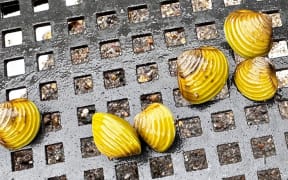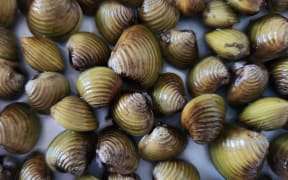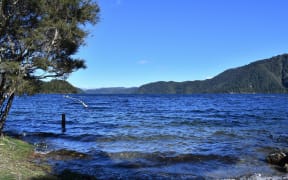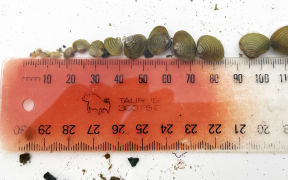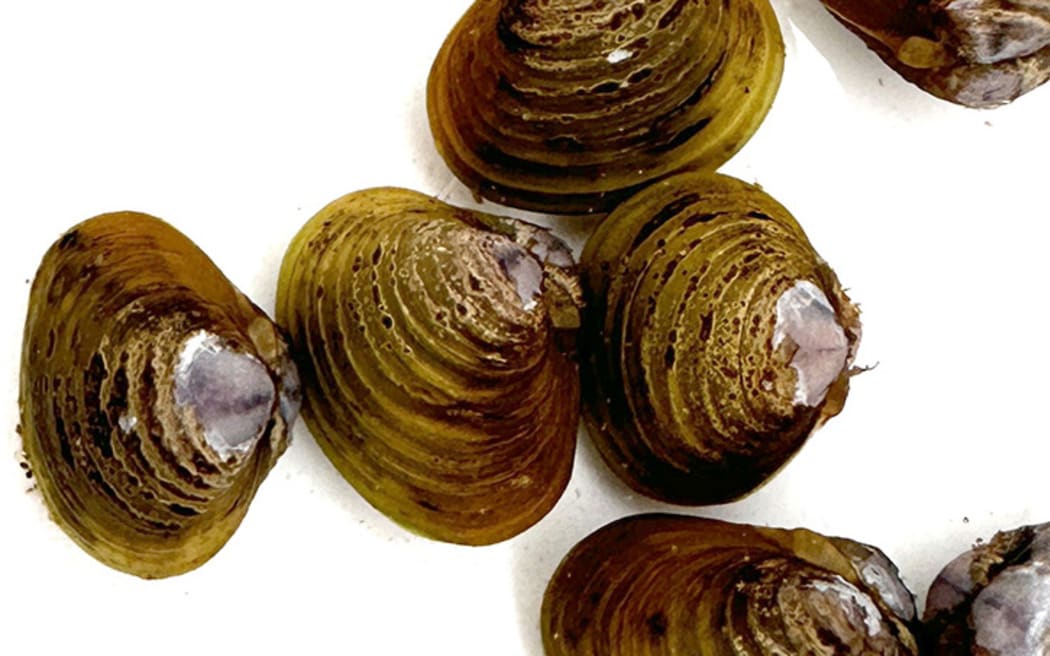
Freshwater gold clams have been found at Lake Taupō Aqua Park, which has prompted Biosecurity New Zealand to temporarily close the site. File image. Photo: Supplied/ NIWA
Biosecurity New Zealand has temporarily closed a Taupō water park following the discovery of the invasive freshwater gold clam.
The authority was now asking anyone who has been at the Lake Taupō Aqua Park in the past two weeks to take action to prevent the spread of the pest.
Gold clams, also known as Asian clams, were found in the Waikato River in May last year and have multiplied to cover a 99km stretch.
In September, the threat from the clam prompted the closure of Rotorua's Lake Ōkataina, a culturally significant and popular trout fishing spot. There were fears that if the clams reached its waters they would cause "irreparable and irreversible damage" to native flora and fauna.
The threat from the clams also prompted control area notices for parts of the Waikato River and many Rotorua lakes.
Biosecurity New Zealand director of readiness and response John Walsh said the Lake Taupō Aqua Park, where the clam was found this week, was a small and contained area. The closure from today was temporary while authorities worked with park operators.
"We encourage anyone who has been at the aqua park in the past week to wash their togs and towels in hot water and thoroughly dry them for at least 48 hours before using them in any other river or lake," Walsh said.
Freshwater gold clams are prolific breeders, able to produce 400 juveniles a day and up to 70,000 juveniles a year.
Because they reproduce so rapidly and form large populations, the clams can clog water-based infrastructure, such as electricity generation plants, irrigation systems, and water treatment plants. They are filter feeders that can potentially compete with native species for food.
Freshwater gold clams can grow to 2cm to 3cm across but are typically much smaller. Their colour ranges from pale gold to gold when small, and gold when larger, but they can also be blackened. They have an obvious ribbed texture on the shell.
Biosecurity New Zealand staff spotted the freshwater gold clam this week when inspecting the water park lagoon following a positive environmental DNA test.
The clam has been contained to the lagoon, Walsh said.

New signage at Lake Karāpiro to remind visitors to stop the spread of the freshwater gold clam. Photo: Kate Durie / NZME
"The lagoon at the Lake Taupō Aqua Park doesn't discharge water into any other body of water, including Lake Taupō and the Waikato River.
"Because of this, the most likely way that clams could spread from the lagoon would be human activity, so temporarily closing the lagoon while we look at longer term options for dealing with the clams there is the best way to avoid this."
Walsh said they believed the clam has likely been in the lagoon for two or three years.
"We've increased our surveillance in the surrounding area in response to this find and so far there are no indications of the clam in any nearby waterways including the Waikato River and Lake Taupō."
Biosecurity New Zealand has a national surveillance plan for the clam in place, with a primary focus on detecting any spread of the clam beyond its current known locations on the Waikato River and now, the Lake Taupō Aqua Park.
More information about the clam and the biosecurity measures in place can be found on the Biosecurity New Zealand website.
Found in freshwater or brackish water, gold clam can survive a wide range of temperatures and salinities and can live:
- In the water
- On top of sandy or muddy surfaces
- Buried shallowly in sand or mud with their shells partly exposed.
They can also be found among debris, such as leaves, that may have settled on the riverbed.
- This story was first published by NZ Herald

